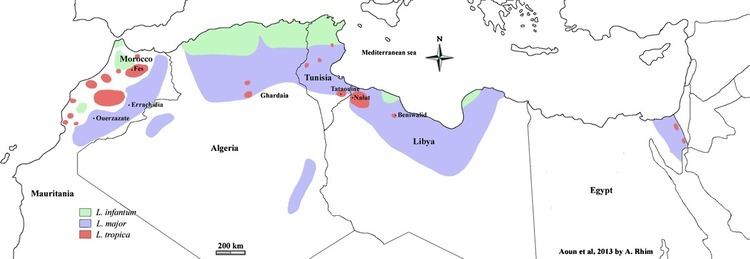Domain Eukaryota Higher classification Leishmania | Family Trypanosomatidae Scientific name Leishmania infantum Rank Species | |
 | ||
Similar Leishmania, Trypanosomatida, Lutzomyia, Phlebotomus, Phlebotominae | ||
Promastigoti di leishmania infantum in coltura
Leishmania infantum is the causative agent of infantile visceral leishmaniasis in the Mediterranean region of the Old World and in Latin America, where it has been called Leishmania chagasi. It is also an unusual cause of cutaneous leishmaniasis, which is normally caused by specific lineages (or zymodemes). Wild canids and domestic dogs are the natural reservoir of this organism. Leishmania infantum is closely related to Leishmania donovani, and some authors believe that these two species are so close as to actually be subspecies of each other; however, phylogenetic analyses can easily distinguish between the two groups, although analysis has shown that some isolates of Leishmania donovani have been classified as Leishmania infantum and that the former includes a number of different genetic groups.
Contents
- Promastigoti di leishmania infantum in coltura
- Medical vocabulary what does leishmania infantum mean
- L infantum is a model system for studies of DNA repair
- References
Medical vocabulary what does leishmania infantum mean
L. infantum is a model system for studies of DNA repair
Comparative bioinformatic analyses showed that the size of the L. infantum BRCA2 protein is approximately three-times smaller (125kD) than its human counterpart. Furthermore, analyses revealed that LiBRCA2 possesses key features of the BRCA2 family. The smaller size of the Leishmania BRCA2 DNA repair protein has been exploited to better understand its function in homologous recombination and its interaction with the LiRAD51 recombinase.
